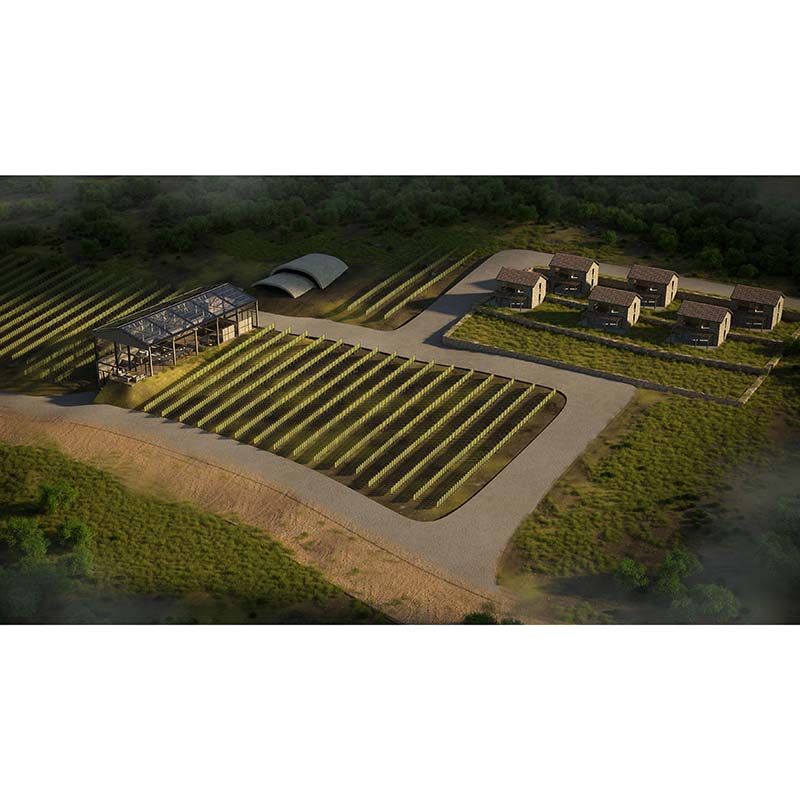



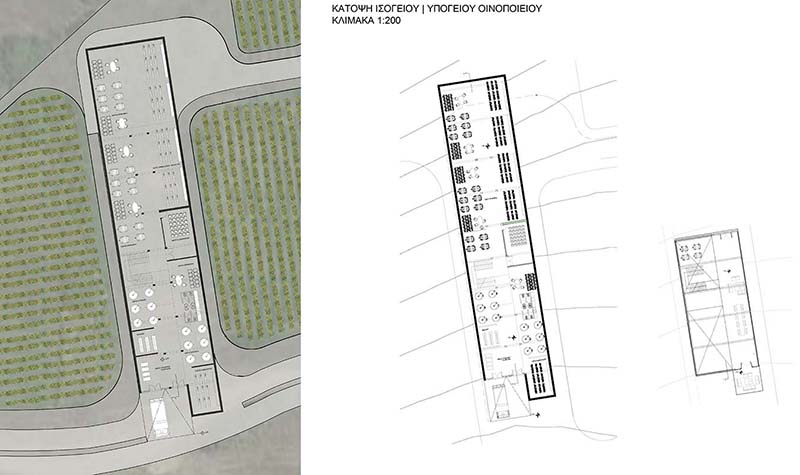

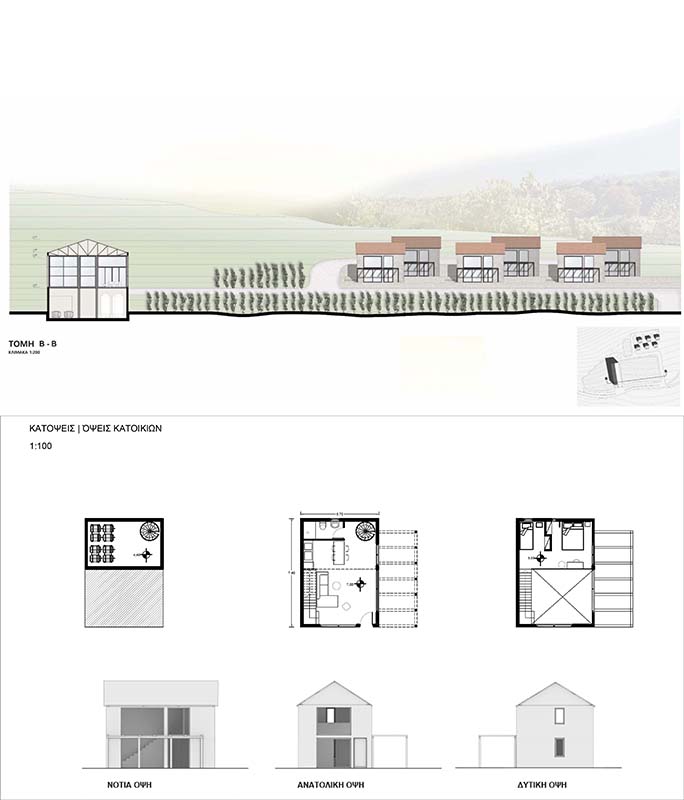

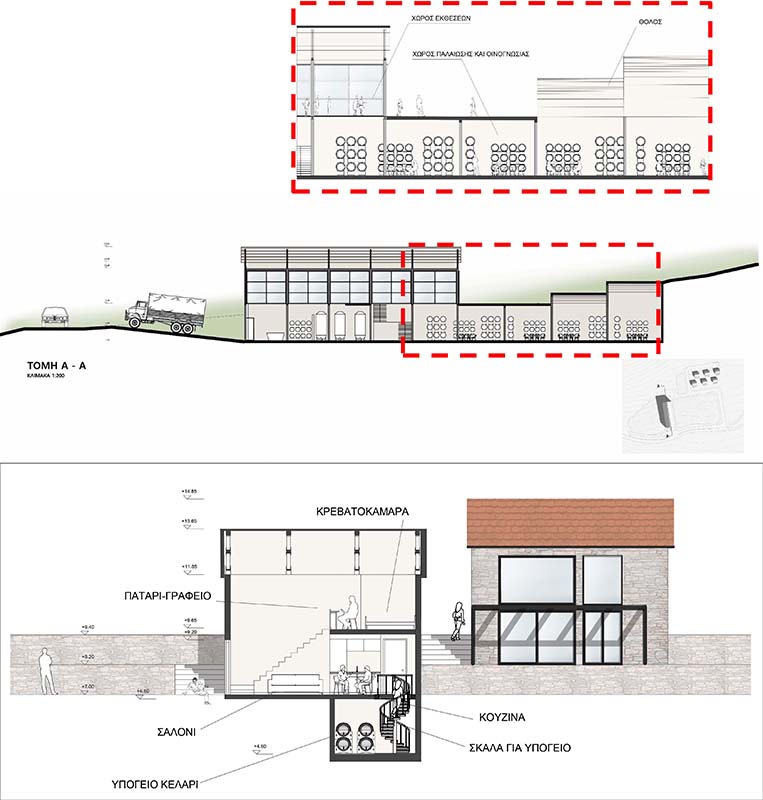

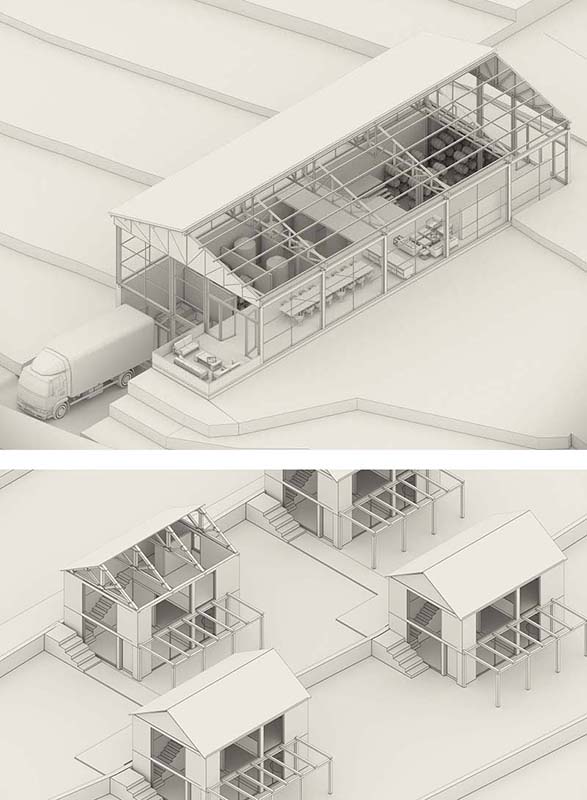

This thesis takes place in Rapsani, a small village at Mount Olympus. Viticulture is a symbol of the village as well as a PDO (Protected Designation of Origin) wine zone of Greece in which 5 wineries are active. In recent years, there has been a movement of young winegrowers, who are looking for land to rent or buy, in order to plant new vines, while a new winery is already being prepared within the PDO wine production zone. These data show that the viticultural tradition in Rapsani has a dynamic, creating new prospects for development.
The idea of designing a wine center (winery, meeting place, living space) was made on the occasion of my experiential relationship with the vineyard, the abundance of vineyard lands in the wider area as well as my need to promote the wine tradition of Rapsani.
Specifically, the proposal concerns the creation of a wine center, 1000 meters from the village, for both residents and visitors on an area of approximately 10,000 m2. On the plot the uses that are developed are divided into three thematic zones, those of the winery, visitors and accommodation. The first two are part of the same building and operates as a winery with the entire production line and as a meeting place that reproduces the local history of wine (exhibition space) and in general a gathering place for people who love wine. The third concerns the possibility of hosting guests in specially designed residences on the same plot.
Finally, our goal is to connect the visitor with the winemaking process, making it more understandable and experiential as he will be able to follow the winemaking in all its stages. Moreover, he will have the opportunity by staying in the vineyards, to move around with a set of itineraries designed and, in this way, to experience winemaking.
Supervisor: Vyzoviti Sophia
Reference Number: 986
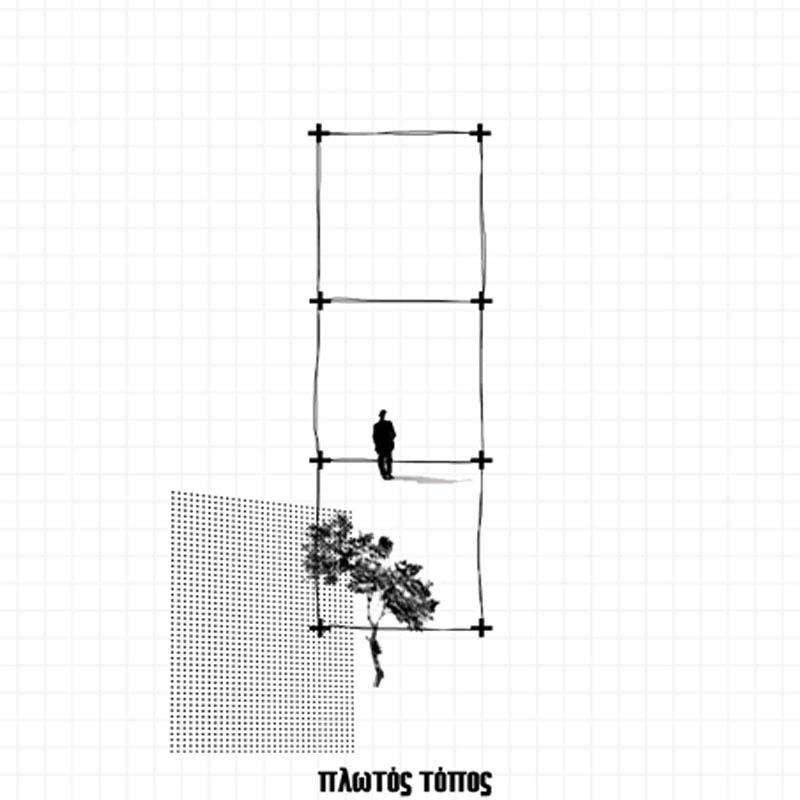

This thesis aims to complete a floating research center for the protection of the Pagasetic Gulf, energy autonomous and environmentally safe. In order to host researchers, students and visitors. The facilities it will contain, (operational program) will support the daily needs of visitors and scientists-engineers: laboratories, greenhouses, offices, conference rooms, auditorium, restaurant, library, meeting rooms, rooms. The architectural proposal describes a system of spaces that can be accessed incompatible in height and width as they are freely dispersed in multiple levels of different heights connected by stairs, ramps and corridors. The architectural space system is functionally enriched by nesting boxes of plant and tree varieties. Proposing a new condition of transparency, and ecologically significant space for life and events.
Supervisor: Stylidis Iordanis
Reference Number: 995
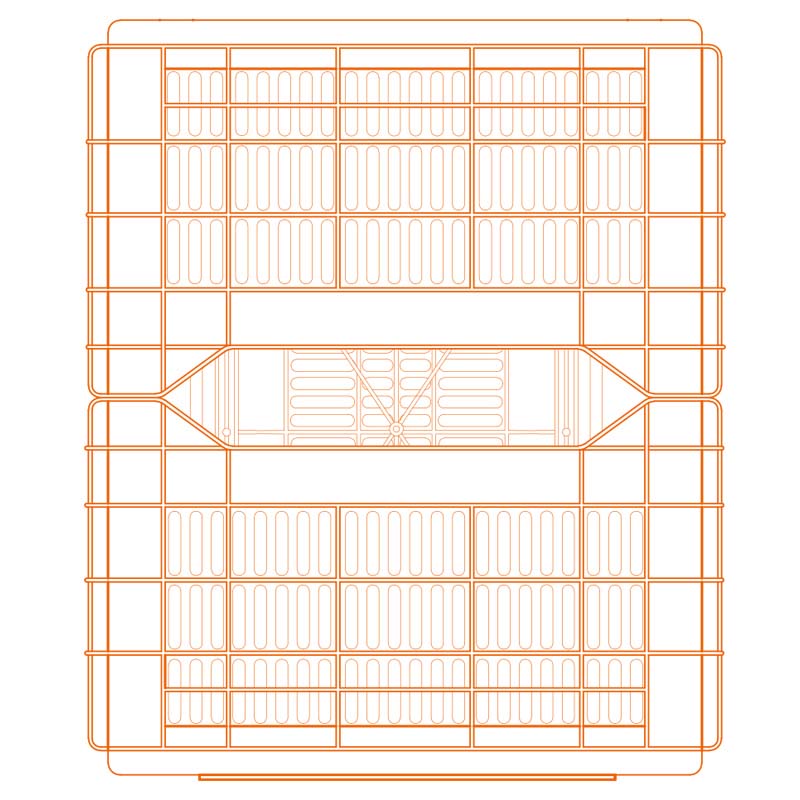

This thesis is a continuation of my research project entitled: "Self-sufficiency practices: a survival manual from Sourpi and Lachanas".
The basic meanings of "self-sufficiency", "storage", and "movement" through an intergenerational memory, which were of interest to me in my research, continue to be key elements of the thesis. Moreover, they focus on personal experience and the necessity of sharing goods, practices, and knowledge with others through contemporary lifestyles.
The narrative begins, in chronological order, through extensive observation and research, about the life and daily practices of my relatives in the two villages where I come from. At first as a simple observer and then as an active subject and its relationship with the materials, objects, and environment of those two places. An architectural design is therefore performed based on "experience", "sensory experiences", "feeling", "care" and "performance".
The narrative culminates in the discovery and composition of a construction that on the one hand serves to save and move, and on the other creates the conditions for sharing and interaction.
"To kafasi" finds its own place during the narrative and is the predominant object of synthesis and research.
Supervisor: Giannisi Phoebe
Reference Number: 997
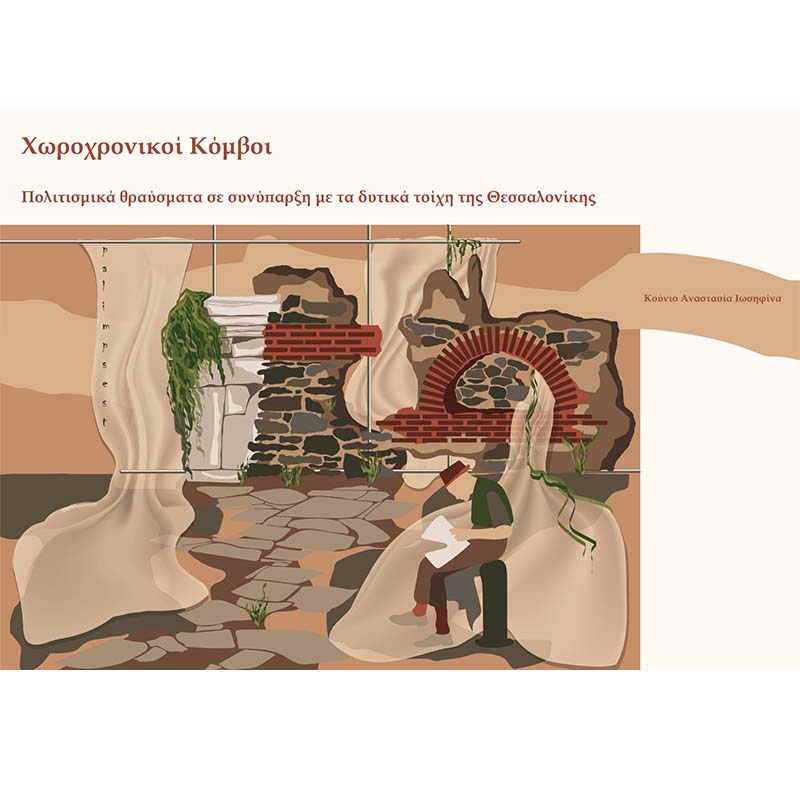

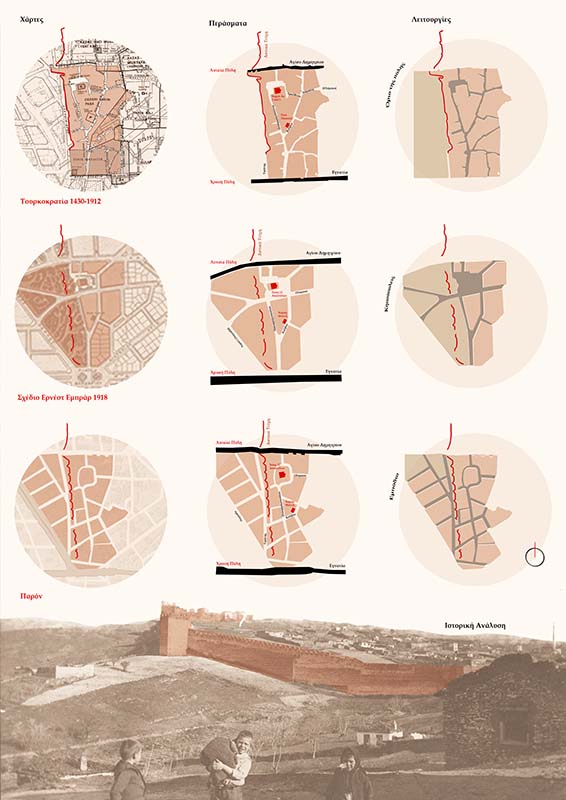

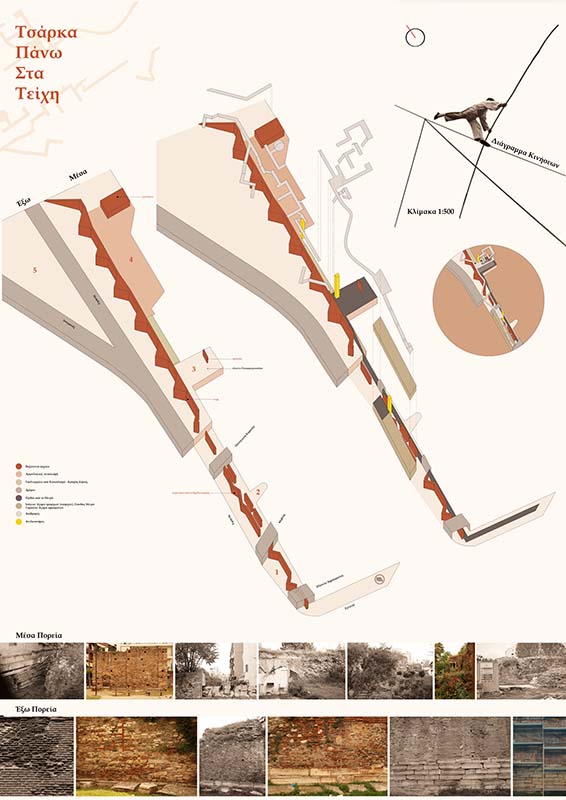

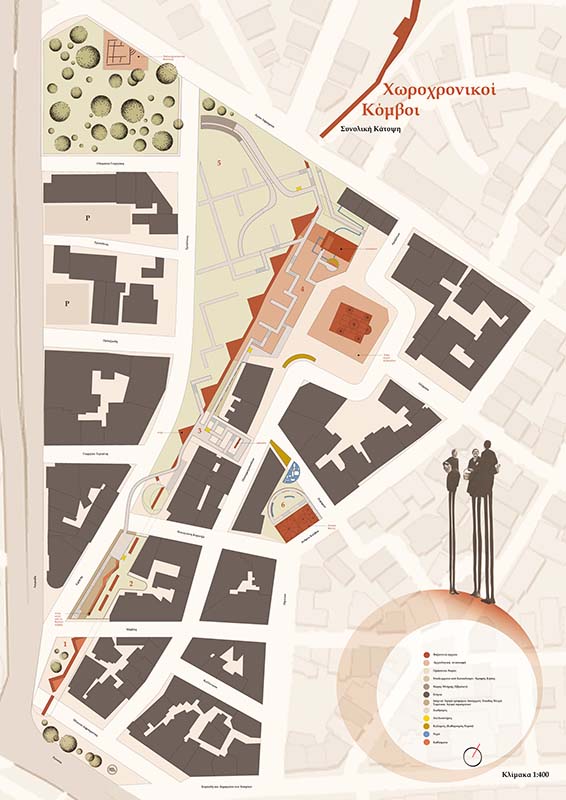

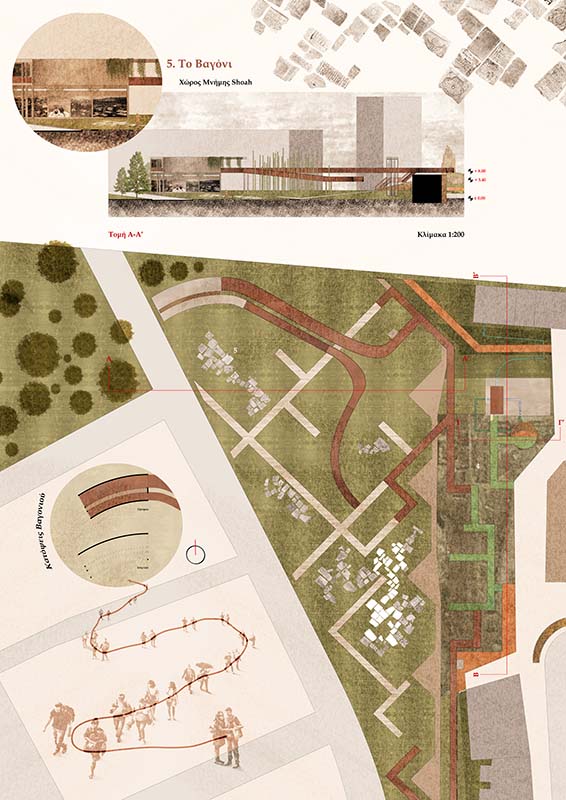

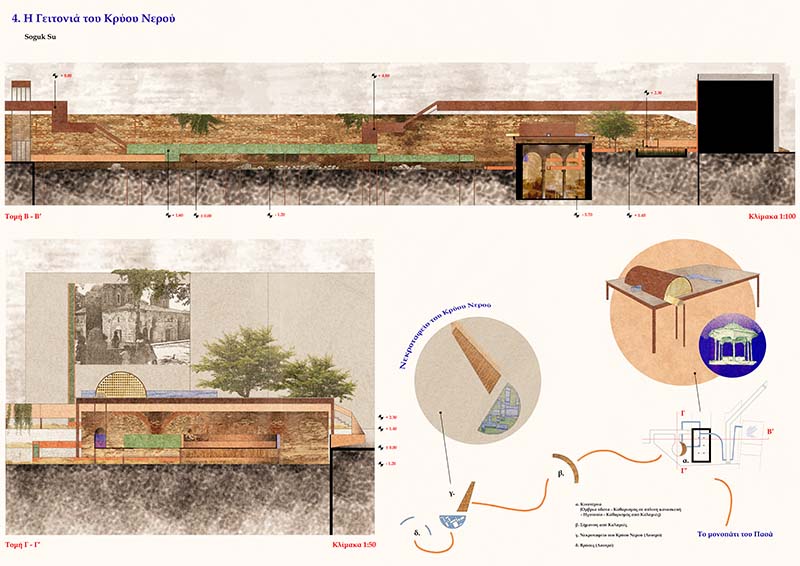

The architectural proposal of the present thesis concerns the utilization and promotion of a part of the walls of Thessaloniki. The purpose was to analyze and then re-conceptualize this prominent boundary of the city as well as the internal (city), external (countryside) space created by it. The area chosen is located at the western edge of the historic center and is defined by two main road axes of the city, those of Egnatia (Golden Gate) and Agios Dimitrios (Lytaia gate).
During the Byzantine period (until 1430) this district included the Church of the Holy Apostles and a cistern which probably was receiving water from the aqueduct that existed outside the walls, southwest, and from the rainwater. During the Ottoman Empire (until 1912) the temple was converted into a mosque with the name Soguk Su Cami'i (Mosque of the cold water) because of the nearby cistern that was watered by the aqueduct now known as Lebet. During this period, a Hammam bath known today as Phoenix, 2 faucets, a fountain and the Cold Water Cemetery were built. Nearby there were also hookah lounges so as for tanners and manufacturers of fur clothing to rest. After the great Thessaloniki fire of 1917, Ernest Ebrard had envisioned this boundary as a garland of garden cities that would encircle the urban center and would be a precursor to the suburbs.
Today the walls meander between private and public space. It's a frontier waiting to find its modern role. Apartment buildings, single-family houses, traces of Roma camps, archaeological excavations are among the elements that exist next to and around it. How could all this multicultural and historical complexity be highlighted in such a way as to create an alternative reading of the city of Thessaloniki free from the extreme Byzantine identity, that will blend harmoniously with the inhabitants of the area?
Supervisors: Giannisi Phoebe, Kouzoupi Aspasia
Reference Number: 992

